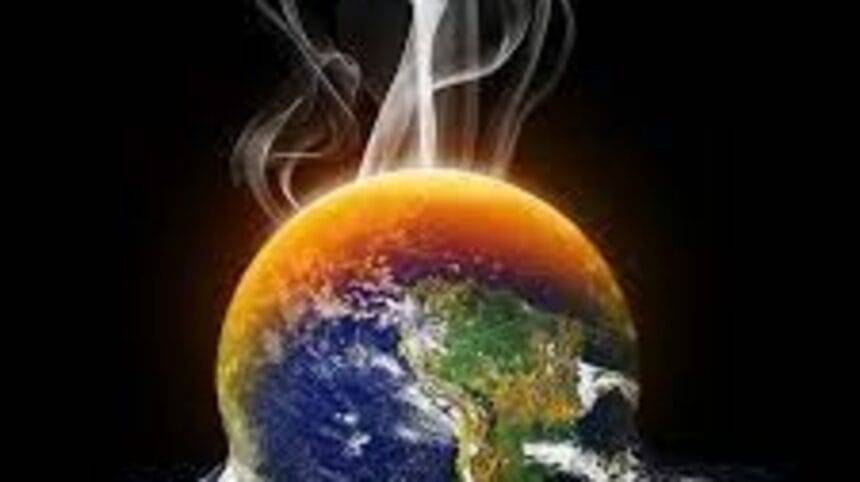Main Points In Hindi (मुख्य बातें – हिंदी में)
-
जलवायु संकट और सामाजिक असमानता: भारत में जलवायु संकट का प्रभाव विशेष रूप से महिलाओं और बच्चों पर पड़ता है, जो आर्थिक, सामाजिक, और स्वास्थ्य संबंधी असमानताओं का सामना कर रहे हैं। इन समूहों की आवाज़ को निर्णय लेने की प्रक्रियाओं से बाहर रखा जा रहा है, जिससे उनकी स्थिति और अधिक कमजोर हो रही है।
-
महिलाओं की भूमिका: भारत में महिलाएं कृषि कार्यबल का लगभग 80% हिस्सा बनाती हैं, फिर भी उन्हें आवश्यक संसाधनों तक सीमित पहुंच है। जलवायु परिवर्तन के कारण उत्पन्न होने वाली आपदाएं उनके स्वास्थ्य, आय और बच्चों के विकास में नकारात्मक प्रभाव डालती हैं।
-
स्वास्थ्य संकट: जलवायु संकट महिलाओं और बच्चों के लिए केवल आजीविका की ही नहीं, बल्कि स्वास्थ्य संकट का भी कारण बनता है। उदाहरण के लिए, जलवायु-प्रेरित आपदाओं में महिलाओं की मृत्यु दर पुरुषों की तुलना में 14 गुना अधिक है, जो उनकी बढ़ती असुरक्षा को दर्शाता है।
-
समावेशी नीतियों की आवश्यकता: भारत के नीति ढांचे को अधिक समावेशी बनाना चाहिए, ताकि महिला नेतृत्व और उनकी विशेषज्ञता को जलवायु नीति और निर्णय लेने की प्रक्रियाओं में शामिल किया जा सके। मौजूदा नीतियों में लिंग आधारित पहलुओं की अनदेखी की जा रही है, जो सुधार की मांग करती है।
- परिवर्तन के लिए सक्रियता: महिलाओं और बच्चों की भागीदारी को बढ़ावा देने वाले उपायों की आवश्यकता है, ताकि वे जलवायु संकट से निपटने के लिए सक्रिय भूमिका निभा सकें। यदि ऐसे कदम उठाए जाते हैं, तो यह जलवायु संकट के प्रभावों को कम करने में मदद करेगा और सामाजिक, आर्थिक स्थिरता के लिए आधारशिला रखेगा।
Main Points In English(मुख्य बातें – अंग्रेज़ी में)
Here are the main points regarding the climate crisis in India, highlighting the specific challenges faced by women and children:
-
Vulnerable Demographics: Women and children in India bear the brunt of the climate crisis, facing heightened risks due to existing social, economic, and health inequalities. Despite their central role in communities, they are often sidelined in discussions and decision-making related to climate change.
-
Impact on Livelihoods and Health: Women constitute about 80% of the agricultural workforce but have limited access to essential resources. Climate-related disasters exacerbate existing inequalities, affecting access to healthcare, clean water, and nutrition, particularly impacting mothers and children.
-
Food Insecurity and Education: The climate crisis has intensified food insecurity, leading to malnutrition and stunted growth in children. Displacement and disruptions caused by climate events hinder educational opportunities, especially for young girls, contributing to early marriages and related health issues.
-
Need for Inclusive Policies: There is a significant gap in existing climate policies regarding gender inclusion. Many state action plans neglect to mention gender, indicating an urgent need for policy frameworks that recognize and integrate women’s roles in disaster management and climate adaptation strategies.
- Empowerment as a Solution: Empowering women and including them in climate decision-making is crucial. Women’s traditional knowledge and organizational capabilities can drive effective climate action, making them key agents of change. For sustainable and equitable climate policies, their participation must be prioritized in all levels of governance.


Complete News In Hindi(पूरी खबर – हिंदी में)
जलवायु संकट निर्णायक वैश्विक संकट है, और कई अन्य पहलुओं की तरह जहां असमानता केंद्रीय हो जाती है, यहां भी असमान प्रभाव बहुत बड़ा है, लेकिन अक्सर किसी का ध्यान नहीं जाता है। भारत में, महिलाएं और बच्चे हमारे समुदायों के प्रमुख स्तंभ हैं, लेकिन दुर्भाग्य से, उन्हें सबसे अधिक जोखिम का सामना करना पड़ता है। यह सिर्फ एक पर्यावरणीय मुद्दा नहीं है; यह एक ऐसी ताकत है जो मौजूदा सामाजिक, आर्थिक और स्वास्थ्य संबंधी असमानताओं को और गहराई तक ले जाती है, जो सबसे कमजोर लोगों पर सबसे ज्यादा प्रहार करती है। हालाँकि जलवायु संकट के लिंग और बच्चों के आयामों के बारे में अधिक जागरूकता बढ़ी है, फिर भी इन संबंधित समूहों को विचार-विमर्श और निर्णय लेने में दरकिनार किया जा रहा है। इस चुनौती का पूरी तरह से सामना करने के लिए, हमें महिलाओं और बच्चों को सशक्त बनाने की दिशा में लचीलेपन और केंद्र के प्रयासों पर पुनर्विचार करने की आवश्यकता है।
भारत में, महिलाएं कृषि कार्यबल का लगभग 80% हिस्सा बनाती हैं, फिर भी लंबे समय से भूमि, ऋण और नई प्रौद्योगिकियों जैसी आवश्यक चीजों तक उनकी पहुंच सीमित रही है। यह उन्हें जलवायु संकट के बढ़ते खतरों के प्रति विशेष रूप से असुरक्षित बनाता है। जलवायु आपदाएँ सिर्फ घरों और आजीविकाओं को ही नष्ट नहीं करतीं; वे स्वास्थ्य देखभाल, स्वच्छ जल और स्वच्छता तक पहुंच में मौजूदा असमानताओं को और गहरा करते हैं। इस व्यापक प्रभाव का खामियाजा महिलाओं और बच्चों को भुगतना पड़ता है, जो संकट के सबसे कठिन छोर पर फंसे हुए हैं।
एक और दिलचस्प परिप्रेक्ष्य ग्लोबल जेंडर एंड क्लाइमेट एलायंस (जीजीसीए) से आता है, जिसने अपने अध्ययन में पाया कि भले ही विकासशील देशों में दुनिया भर में उत्पादित 60-80% भोजन के उत्पादन के लिए महिलाएं जिम्मेदार हैं, लेकिन उनकी पहुंच बहुत कम है। जलवायु-अनुकूली उपकरण, जैसे लचीले बीज या आधुनिक कृषि तकनीक। जब सूखे या बाढ़ के कारण फसलें खराब हो जाती हैं, तो इसका तत्काल खामियाजा महिलाओं को भुगतना पड़ता है – अपने परिवारों को खिलाने के लिए सीमित खाद्य संसाधनों को जुटाने के लिए संघर्ष करते हुए उनकी आय में कमी आती है, जिसका अप्रत्यक्ष रूप से उनके स्वास्थ्य और कल्याण पर भी प्रभाव पड़ता है। जलवायु संकट के कारण आया श्रम का यह अतिरिक्त बोझ न केवल उनकी गरीबी को गहराता है, बल्कि उन्हें ऋण के बोझ, विस्थापन और प्रवासन सहित अन्य चुनौतियों सहित नुकसान के चक्र में फँसा देता है। जलवायु संकट और लैंगिक असमानता के परस्पर विरोधी प्रभावों को नजरअंदाज करना असंभव है, खासकर जब वे महिलाओं को अस्तित्व और विकास के लिए लगातार संकीर्ण होते विकल्पों में फंसा देते हैं।
महिलाओं और बच्चों के लिए, जलवायु संकट केवल आजीविका या शिक्षा के लिए खतरा नहीं है – यह एक पूर्ण पैमाने पर स्वास्थ्य संकट है। विश्व स्वास्थ्य संगठन की रिपोर्ट है कि असमानताओं के कारण जलवायु-प्रेरित आपदाओं में पुरुषों की तुलना में महिलाओं के मरने की संभावना 14 गुना अधिक है। उदाहरण के लिए, अहमदाबाद की गर्म लहरों में महिलाओं की मृत्यु दर पुरुषों की तुलना में कहीं अधिक थी। गर्भवती महिलाओं और युवा माताओं के लिए जोखिम विशेष रूप से अधिक है, पोषण और स्वास्थ्य देखभाल की कमी के कारण भारत में पहले से ही चिंताजनक मातृ एवं शिशु मृत्यु दर और अधिक बढ़ गई है। ये केवल आँकड़े नहीं हैं – ये उन माताओं, बेटियों और देखभाल करने वालों का प्रतिनिधित्व करते हैं जिनकी क्षति आर्थिक प्रभाव के अलावा परिवारों और समुदायों को असुरक्षित बनाती है। पानी की कमी जलवायु संकट का एक स्पष्ट परिणाम है, और पानी लाने के लिए अतिरिक्त मील चलने का बोझ महिलाओं पर पड़ता है।
जलवायु संकट ने खाद्य असुरक्षा को और बढ़ा दिया है, कुपोषण बढ़ गया है और बच्चों का विकास अवरुद्ध हो गया है। विस्थापन स्कूली शिक्षा में बाधा डालता है, मुख्य रूप से युवा लड़कियों के लिए, जिससे वे जीवन भर की शिक्षा और संभावित कमाई से वंचित हो जाती हैं। इससे भी बुरी बात यह है कि यह कम उम्र में शादी और युवा लड़कियों में परिणामी स्वास्थ्य समस्याओं का मूल कारण बन जाता है। हम असमानता और पर्यावरणीय पतन की संयुक्त ताकतों से फंसी एक पीढ़ी के लिए मार्ग प्रशस्त कर रहे हैं, जिससे उनके स्वास्थ्य, शिक्षा और भविष्य की संभावनाओं पर असर पड़ रहा है।
जलवायु संकट के लैंगिक प्रभाव को कम करने के लिए, भारत का नीति ढांचा अधिक समावेशी बनना चाहिए। वर्तमान में मौजूद नीतियां लिंग का उल्लेख करती हैं लेकिन अक्सर घरेलू और सामुदायिक लचीलेपन में महिलाओं की जटिल भूमिका को नजरअंदाज कर देती हैं। उदाहरण के लिए, क्वेश्चन ऑफ सिटीज़ द्वारा 2023 के एक अध्ययन में पाया गया कि जलवायु संकट पर 28 राज्य कार्य योजनाओं में से 12 में लिंग का उल्लेख तक नहीं है, जो सुधार की तत्काल आवश्यकता का संकेत देता है।
महिलाएँ, विशेष रूप से ग्रामीण और स्वदेशी समुदायों में, लंबे समय से प्राकृतिक संसाधन प्रबंधन और पर्यावरण प्रबंधन की रीढ़ रही हैं। उनका गहरा पारंपरिक ज्ञान, देखभाल करने वालों के रूप में उनकी भूमिका के साथ मिलकर, उन्हें जलवायु प्रभावों को कम करने और अनुकूलित करने दोनों में परिवर्तन के शक्तिशाली एजेंटों के रूप में स्थापित करता है। फिर भी, अपनी महत्वपूर्ण भूमिका के बावजूद, महिलाएँ जलवायु संकट की शिकार हैं, जबकि उन्हें समाधानों से अलग रखा गया है।
यह बहिष्कार विशेष रूप से जलवायु नीति और आपदा प्रबंधन में स्पष्ट है, जहां महिलाओं की आवाज़ काफी हद तक अनुपस्थित है। भारत में, यह अंतर जमीनी स्तर पर और भी अधिक स्पष्ट है, जहां महिलाओं को जलवायु आपदाओं का खामियाजा भुगतना पड़ता है, लेकिन निर्णय लेने में उनका प्रतिनिधित्व सबसे कम होता है। इसके बावजूद बदलाव की संभावना अपार है. महिला स्वयं सहायता समूहों, किसान-उत्पादक संगठनों (एफपीओ) और जमीनी स्तर के समूहों ने पहले ही संसाधनों को कुशलतापूर्वक प्रबंधित करने और संकट के समय समुदायों को संगठित करने की अपनी क्षमता का प्रदर्शन किया है। ये रूपरेखाएँ महिलाओं को जलवायु संकट से निपटने का कार्यभार संभालने के लिए एक तैयार मंच प्रदान करती हैं।
अब समावेशी नीतियों की आवश्यकता है जो न केवल महिलाओं के नेतृत्व को स्वीकार करें बल्कि जलवायु कार्रवाई का नेतृत्व करने के लिए उन्हें सक्रिय रूप से बढ़ावा दें और सशक्त बनाएं। उनके ज्ञान, अनुभव और संगठनात्मक क्षमता का उपयोग करके, हम जलवायु संकट का रुख मोड़ सकते हैं और यह सुनिश्चित कर सकते हैं कि जो सबसे अधिक प्रभावित हैं वे समाधान के पीछे प्रेरक शक्ति बनें। महिलाएं सिर्फ पीड़ित नहीं हैं; वे जलवायु लचीलेपन की कुंजी हैं। महिलाओं और बच्चों को जलवायु नीति डिजाइन और निर्णय लेने की प्रक्रियाओं में सबसे आगे होना चाहिए। चाहे स्थानीय शासन में औपचारिक प्रतिनिधित्व के माध्यम से या समुदाय के नेतृत्व वाली पहल के माध्यम से, उनकी आवाज़ ऐसे समाधान तैयार करने के लिए आवश्यक है जो प्रभावी और न्यायसंगत दोनों हों।
भारत को, वैश्विक जलवायु वार्ताओं में एक नेता के रूप में और जलवायु प्रभावों के प्रति अत्यधिक संवेदनशील राष्ट्र के रूप में, यह सुनिश्चित करने के लिए साहसिक कदम उठाने चाहिए कि उसकी जलवायु नीतियां न केवल टिकाऊ हों बल्कि न्यायसंगत भी हों। सरकार की पहल, जैसे जलवायु संकट पर राष्ट्रीय कार्य योजना (एनएपीसीसी) और विभिन्न राज्य-स्तरीय कार्यक्रम, एक अच्छी शुरुआत है लेकिन इसमें मजबूत लिंग लेंस का अभाव है। किसी जलवायु योजना की सफलता को आंकने का मुख्य लेंस समानता का लेंस होना चाहिए।
यदि भारत अपने जलवायु कार्रवाई एजेंडे में महिलाओं और बच्चों की जरूरतों को नजरअंदाज करता है, तो इससे उसके सामाजिक और आर्थिक भविष्य के कमजोर होने का खतरा है। एक मजबूत लिंग लेंस के बिना, एनएपीसीसी जैसी पहल अपनी क्षमता से कम हो जाएंगी, जिससे लाखों लोग जलवायु संकट के बढ़ते खतरों के प्रति संवेदनशील हो जाएंगे। महिलाओं और बच्चों को दरकिनार करके – जो सामुदायिक लचीलेपन के लिए अभी भी आवश्यक हैं, सबसे अधिक प्रभावित हैं – भारत मौजूदा असमानताओं को गहरा करने, गरीबी को बदतर बनाने और दीर्घकालिक आर्थिक विकास को अवरुद्ध करने का जोखिम उठाता है। अब कार्रवाई करने में विफलता भावी पीढ़ियों को अभाव और खोए हुए अवसरों के चक्र में बंद कर देगी, जिससे वैश्विक जलवायु मंच पर नेतृत्व करने और अपने सभी नागरिकों के लिए एक स्थायी, न्यायसंगत भविष्य का निर्माण करने की देश की क्षमता खत्म हो जाएगी। साहसिक, समावेशी कार्रवाई सिर्फ एक विकल्प नहीं है – यह एक आर्थिक और सामाजिक अनिवार्यता है।
यह लेख स्वास्थ्य और परिवार कल्याण मंत्रालय और पर्यावरण, वन और जलवायु संकट मंत्रालय, नई दिल्ली के पूर्व सचिव सीके मिश्रा द्वारा लिखा गया है।
Complete News In English(पूरी खबर – अंग्रेज़ी में)
The climate crisis is a critical global issue, and like many other areas where inequality is prominent, its impact often goes unnoticed. In India, women and children are vital pillars of our communities but face the greatest risks from climate change. This is not just an environmental issue; it exacerbates existing social, economic, and health inequalities, striking the most vulnerable the hardest. Although there is growing awareness about the impact of the climate crisis on gender and children, these groups continue to be sidelined in discussions and decision-making processes. To address this challenge fully, we need to rethink our efforts to empower women and children and enhance our resilience.
In India, women make up about 80% of the agricultural workforce, yet they have long been limited in accessing essential resources like land, loans, and new technologies. This leaves them particularly vulnerable to the growing threats from climate change. Climate disasters not only destroy homes and livelihoods but also deepen existing inequalities in access to healthcare, clean water, and sanitation. The impact of this crisis falls hardest on women and children, who are often left in the most difficult situations.
According to the Global Gender and Climate Alliance (GGCA), while women produce 60-80% of the food in developing countries, their access to climate-resilient tools, such as robust seeds or modern farming techniques, is minimal. When crops fail due to droughts or floods, women bear the brunt of the consequences, struggling to gather limited food resources and facing a drop in their income that indirectly affects their health and well-being. This added burden of labor from the climate crisis not only deepens their poverty but also entangles them in cycles of debt, displacement, and migration. It’s crucial to recognize the intertwined effects of the climate crisis and gender inequality, especially as they narrow the choices available to women for survival and development.
For women and children, the climate crisis is not just a threat to livelihoods or education; it’s a full-scale health crisis. The World Health Organization reports that due to inequalities, women are 14 times more likely to die from climate-induced disasters than men. For instance, during heatwaves in Ahmedabad, the mortality rate for women significantly surpassed that of men. Pregnant women and young mothers face especially high risks; nutritional and healthcare deficiencies have worsened the already alarming maternal and infant mortality rates in India. These figures represent real lives—mothers, daughters, and caregivers—whose losses pose risks beyond just economic impacts for families and communities. Water scarcity is a clear result of climate change, and the burden of fetching water often falls on women.
The climate crisis has intensified food insecurity, escalated malnutrition, and hindered child development. Displacement disrupts schooling, particularly for young girls, denying them lifelong educational opportunities and potential earnings. This also contributes to early marriage and health issues among young girls. We are paving the way for a generation caught between inequality and environmental decline, negatively affecting their health, education, and future prospects.
To mitigate the gendered impacts of the climate crisis, India’s policy framework must become more inclusive. Existing policies mention gender but often overlook the complex roles women play in household and community resilience. For example, a 2023 study by the Question of Cities found that out of 28 state action plans on the climate crisis, 12 do not even mention gender, signaling an urgent need for improvement.
Women, especially in rural and indigenous communities, have long been the backbone of natural resource and environmental management. Their deep traditional knowledge, combined with their caregiving roles, positions them as powerful agents of change in both mitigating and adapting to climate impacts. Nevertheless, despite their crucial role, women are often victims of the climate crisis while being excluded from the solutions.
This exclusion is particularly evident in climate policy and disaster management, where women’s voices are largely absent. On the ground in India, women suffer the consequences of climate disasters but are underrepresented in decision-making roles. Despite this, the potential for change is immense. Women’s self-help groups, farmer-producer organizations (FPOs), and grassroots groups have already demonstrated their ability to manage resources effectively and organize communities during crises. These frameworks provide a ready platform for women to take charge of addressing the climate crisis.
Now is the time for inclusive policies that not only acknowledge women’s leadership but also actively promote and empower them to lead climate action. By leveraging their knowledge, experience, and organizational capabilities, we can shift the tide of the climate crisis and ensure that those most affected become the driving force behind solutions. Women are not just victims; they are key to climate resilience. Women and children must be at the forefront of climate policy design and decision-making processes. Whether through formal representation in local government or community-led initiatives, their voices are essential for crafting effective and just solutions.
As a leader in global climate discussions and a nation highly sensitive to climate impacts, India must take bold steps to ensure its climate policies are sustainable and equitable. Government initiatives, such as the National Action Plan on Climate Change (NAPCC) and various state-level programs, are a good start, but there is a lack of a strong gender lens in these efforts. The primary lens for measuring the success of any climate plan should be that of equality.
If India continues to overlook the needs of women and children in its climate action agenda, it risks undermining its social and economic future. Without a strong gender lens, initiatives like the NAPCC will fall short of their potential, leaving millions vulnerable to the growing threats posed by the climate crisis. By sidelining women and children—who are still essential to community resilience and are the most affected—India risks deepening existing inequalities, worsening poverty, and blocking long-term economic growth. Failing to act now will trap future generations in cycles of deprivation and lost opportunities, jeopardizing the nation’s ability to lead on the global climate stage and to create a sustainable and just future for all its citizens. Bold, inclusive action is not just an option; it is an economic and social necessity.
This article was written by C.K. Mishra, former Secretary of the Ministry of Health and Family Welfare and the Ministry of Environment, Forest, and Climate Change, New Delhi.




